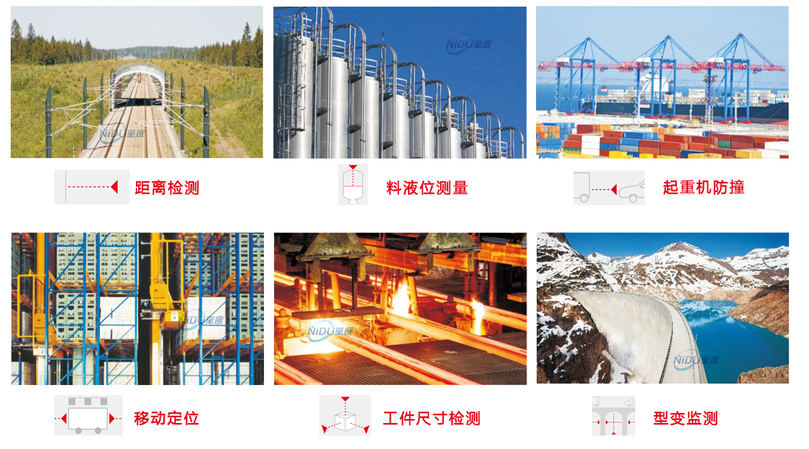Laser distance sensor is a new generation of distance measuring equipment, which is powerful, durable and designed for the industrial measurement market. The device has many excellent performances and is one of the most advanced economical online position detection systems with amazing test accuracy and extremely high stability. Since it is to accurately calculate the distance by emitting a laser beam to the target object and using the reflected beam, it can reach a very long detection distance without adding a reflective target, and the size area of the target object is much smaller than the area required by ultrasound, making it possible to detect the position of small-sized objects at a long distance.
1. Development of laser distance sensor
Laser is widely used in the field of detection, with rich technical content and obvious impact on social production and life. Laser distance measurement is one of the earliest applications of laser. This is because laser has many advantages such as strong directionality, high brightness and good monochromaticity. The basic principle of using laser transmission time to measure distance is to determine the target distance by measuring the time required for the laser to travel back and forth to the target.
2. Working principle of laser distance sensor
When the laser sensor is working, the laser diode first emits a laser pulse at the target. After being reflected by the target, the laser scatters in all directions. Part of the scattered light returns to the sensor receiver, is received by the optical system and imaged onto the avalanche photodiode. The avalanche photodiode is an optical sensor with an internal amplification function, so it can detect extremely weak light signals. By recording and processing the time from the light pulse to the return reception, the target distance can be determined. Transmission time laser sensors must measure the transmission time extremely accurately because the speed of light is too fast.
For example, the speed of light is about 3´108m/s. To achieve a resolution of 1mm, the electronic circuit of the transmission time ranging sensor must be able to distinguish the following extremely short time:
0.001m¸(3´108m/s)=3ps
To distinguish 3ps of time, this is an excessively high requirement for electronic technology and is too expensive to implement. However, today's cheap transmission time laser sensors cleverly avoid this obstacle and use a simple statistical principle, the average law, to achieve a resolution of 1mm and ensure response speed.
3. Application of laser distance sensor:
Practical application examples:
1. Measuring the width of boxes on conveyor belts
Use two divergent transmission time laser sensors and install them face to face on both sides of the conveyor belt. Because the position of boxes with varying sizes falling on the conveyor belt is not fixed, each sensor measures the distance between itself and the box, assuming one distance is L1 and the other is L2. This information is sent to the PLC, which subtracts L1 and L2 from the total distance between the two sensors to calculate the width W of the box.
2. Protecting the hydraulic forming die
The robot puts a preformed tube into the lower die of the hydraulic forming machine, and the operator must ensure that the position is accurate each time. Before the upper die falls, a divergent sensor measures the distance to the critical section of the tube, which ensures that the die is in the correct position before closing.
3. Positioning of two-axis cranes
Use two reflective sensors to face the reflector, which is installed on the two moving units of the bridge crane. One unit moves forward and backward, and the other moves left and right. When the crane drives the plate rack roller, two sensors monitor the distance to the reflector, and the precise position of the crane can be continuously tracked through the PLC.
With this new low-cost transmission time laser distance sensor, long-distance position detection of reflective or multi-color targets is no problem even when the detection angle changes.

Applications of laser distance sensors: industrial liquid level, material level, production line material transfer positioning, overhead crane XY positioning, large workpiece assembly positioning; geometric measurement of large objects, light scattering test, ultrasonic characteristic test, military firearms calibration, target distance automatic control, ship safety distance, container positioning and other fields. Because it is an online continuous detection, it eliminates the need for manual point-to-point like a handheld laser rangefinder, and can be unattended and continuously monitored. Its position data can also be transmitted to a remote monitoring terminal, making it an ideal instrument for industrial automation and intelligent production management.


